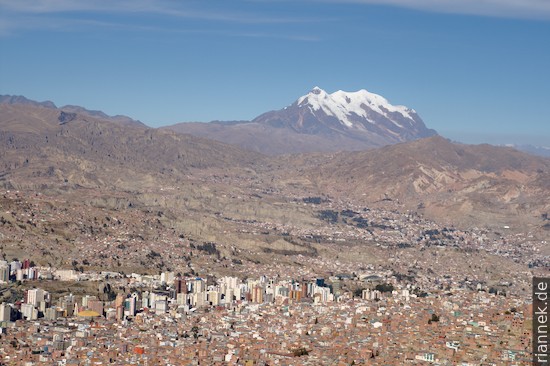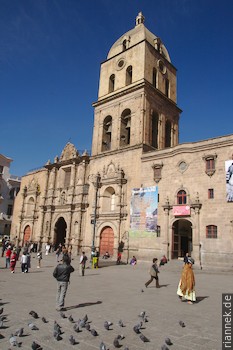
La Paz is simply a grandiose city. Just looking down from El Alto, filled with an endless sea of brick-red houses, almost identical in colour to the reddish brown of the ground, and behind them the mighty mountain Illimani. Down there, minibuses and ancient buses push their way at walking pace through the narrow streets in endless queues, filling the thin air with blue-black exhaust fumes. On the narrow pavements, women in colourful bell-shaped skirts and with melons on their heads spread vegetables and fruit, a dense crowd…
The national holiday, la dia de la indepedencia, is approaching and every day endless parades and demonstrations pass through the city, making the traffic chaos even more perfect. In a military parade, units parade through Plaza Murillo. On a gallery in front of the cathedral, serious-looking generals next to indigenous women in colourful skirts and with melons on their heads. In between, el presidente del nuevo Bolivia, Evo Morales. Mountain fighters with climbing belts wear skis at least 15 years old, whose bindings inspire little confidence. Then sailors from the navy, which Bolivia must have forgotten to abolish since the Saltpetre War…

At the same time, the entire south-west of the country has been sealed off by blockades for two weeks, and petrol, food and medicine are slowly becoming scarce. The centre of the protest is the silver mining town of Potosi, whose economic future is not only the concern of the Miñeros.
Read on
Travelogue Andes 2010
Arequipa and Isla del Sol
Cycling into the Yungas
Sajama and Lauca
Ascent of the Illimani
Amboro National Park
From Uyuni to San Pedro and ascent of Licancabur